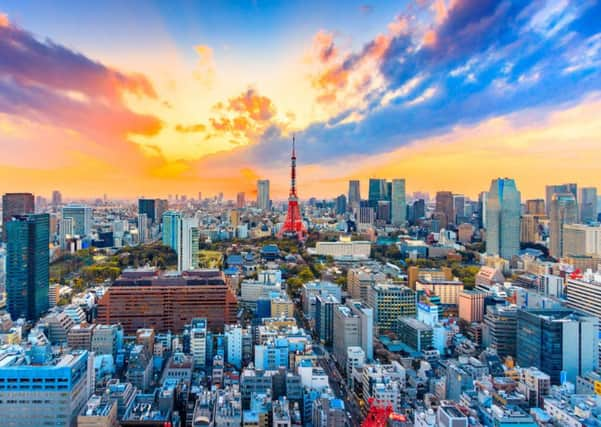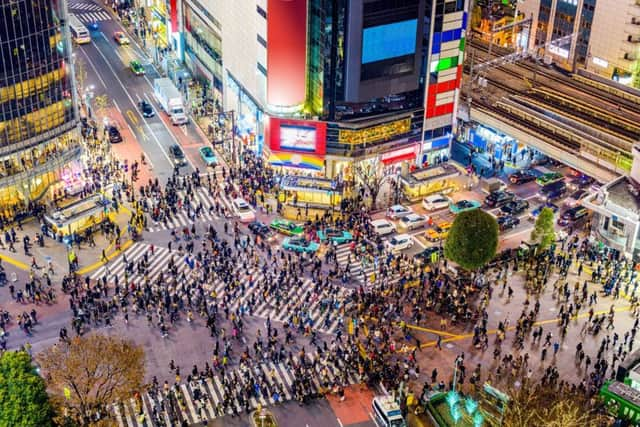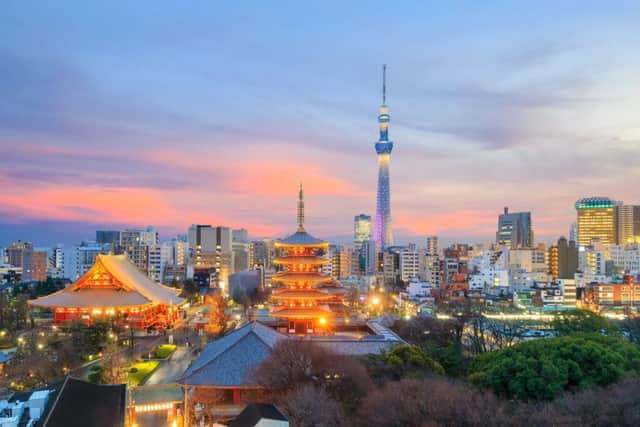72 hours in Tokyo - Living the high life at the Mandarin Oriental


The twinkling lights of the world’s biggest city stretch to the horizon as night falls. Outside, 600ft below me, crowded trains snake between skyscrapers and tiny cars scuttle along highways amid the luminescence of thousands of neon bulbs as the city pulses with life.
High life
My vantage point on the 36th floor of the Nihonbashi Mitsui Tower is an oasis of calm at the very heart of the city. I’m staying at the Mandarin Oriental Tokyo, the five-star hotel, widely regarded as one of the best in the country for comfort and luxury.
Advertisement
Hide AdAdvertisement
Hide AdBamboo flooring, paper lanterns and lacquered surfaces all contribute to the Mandarin Oriental’s serene atmosphere and understated luxury. The cityscape views from the many bars and rooms are stunning. It may well be the best hotel I’ve ever stayed in, which is what one would expect with a lead-in room rate of around £500 per night.
The first of my three days in Japan is mercifully laid back. I spend it wining and dining within the premises. A delectable task in a building which comes with no less than three Michelin starred restaurants. Gastronomes are spoilt for choice and can pay homage in this temple of haute cuisine at any of its 12 eateries/bars. After grazing my way around the hotel, the award-winning spa and the panoramic views help to combat the nine-hour jet lag and leave me well rested.
Nihonbashi
Tokyo is a place where you can find millennia-old traditional crafts practised alongside cutting edge innovation. Nihonbashi, the district where I’m staying, is the embodiment of this. It’s the original centre of Japanese commerce. “All roads lead to Nihonbashi”, I am told by my tour guide on my second day in the city. For centuries the bridge the district is named after has been used as the point from which all distances are measured to the Japanese capital.


Today, contrasting with flamboyant, upstart areas like Shibuya and Shinjuku, Nihonbashi mixes the old with the new. We tour centuries-old shops alongside modern mini malls, their owners masters of their traditional trades from knife making to paper production. Men and women in business attire can be seen visiting the renovated 9th century Fukutoku Shinto Shrine, which supposedly brings good fortune in the lottery.
We dine at Suigian restaurant and are treated to a fabulous array of sushi and sake as we watch Noh, the classical Japanese theatre, said to be the world’s oldest surviving dramatic art. It’s a highly specialised genre with music and movement used to retell tales from ancient folklore. Thankfully, the performers give an English synopsis before and after the performance.
Ginza shopping
After lunch we visit the upmarket shopping district of Ginza. One square metre of land in the district is supposedly worth over ten million yen (£72,428) giving it some of the most expensive real estate in Japan. Here, shopaholics can lose themselves in the gigantic Ginza Six department store and its 241 shops.


Itoya, a tall and stylish stationery department store, sells everything from handmade pens to greeting cards for every possible occasion and is well worth a visit. I go in questioning the appeal of a giant stationery shop and come out with a lighter wallet, several Christmas gifts for the more practically-minded members of my family and raving about the hydroponics farm on the upper floor.
‘Memory Lane’
In the evening we venture into the beating commercial heart of Tokyo, Shinjuku. The district is the Blade Runner-esque Tokyo many envision before arriving. It’s packed with people (1.2 million use the station there daily), imposing skyscrapers, kitschy pachinko (slot machine) parlours, futuristic megastores, flashing neon advertisements, a robot restaurant and a warren of back alleys. It’s loud, brash and an assault on the senses. It’s also a lot of fun.
Advertisement
Hide AdAdvertisement
Hide AdFor dinner we seek out Omoide Yokocho (Memory Lane) an iconic, dimly lit alley lined with tiny restaurants serving yakitori (skewered chicken), seafood, and fresh vegetables.
The food is delicious, authentic and reasonable. The restaurants are crowded, the staff are refreshingly blunt, and it feels like an authentic Tokyo experience – even if it does feature in the guidebooks.
After a few Asahi beers we head to a karaoke bar where we book a private a room and proceed to butcher several of the English songs in the catalogue late into the night.
Imperial Palace
Arising the following morning with I’m Gonna Be (500 Miles) still ringing in my ears, I venture down to the lobby for my final day in Tokyo. Our first stop is the Imperial Palace, which sits in a large park surrounded by moats and imposing stone walls. This is where Emperor Akihito and his family reside, but you won’t see him. The inner areas are closed off to the public unless it’s a special occasion, however, the immaculate gardens combined with the enchanting colours of the autumnal foliage make the trip worthwhile.
We stop for some quiet reflection at the Meiji Shrine, a forested area dedicated to Emperor Meiji, the man who began Japan’s rapid modernisation into a world power in 1868. Shrines are a fundamental part of Japan’s ancient religion, Shinto, and offer a tranquil respite from Tokyo’s electric pace.
Kawaii in Harajuku
A mere five minutes away we find a very different slice of Japanese culture. The Harajuku district is home to the sugary sweet Takeshita Street, dedicated to the Japanese love of cuteness or “kawaii”. Teenagers strut the street in cartoon-like outfits, loud signs invite you into hedgehog cafes (you pet the hedgehogs, don’t try to eat them!) and rainbow coloured candy floss sits alongside waffles drenched in chocolate sauce in store windows. It’s all very weird but somehow it works.
My final evening in Japan is spent in foodie heaven back at the Mandarin Oriental Tokyo. With only eight seats, the Michelin-starred Tapas Molecular Bar is a restaurant like no other. Over the course of two hours, chefs prepare intricate delicacies right in front of you, melding chemistry with cookery to create exquisite dishes. The menu changes three times a year, but among the avant-garde creations we sampled were: onion soup in bubble form, unbroken grapes with champagne inside and liquid nitrogen dipped desserts.
Innovation mixed with traditional Japanese ingredients. A bit like this wonderful city.
Domo arigato, Tokyo.
FACTFILE
Advertisement
Hide AdAdvertisement
Hide AdThe trip to the Mandarin Oriental Tokyo was sponsored by Tokyo Convention and Visitors Bureau, Mitsui Fudosan Co and Suigian.
Rates for Mandarin Oriental, Tokyo, start from ¥67,000 per room per night (about £460). For more information, or to make a booking, please call +81 3 3270 8800 or visit www.mandarinoriental.com/tokyo
Flights were with British Airways from London Heathrow to Tokyo Haneda Airport.
The Nihonbashi tour was sponsored by Mitsui Fudosan Co: http://www.nihonbashi-tokyo.jp/en/information_center/
Lunch at Suigan: https://suigian.jp/en/
More information on Tokyo Conventionand Visitors Bureau is available at https://tokyotokyo.jp/